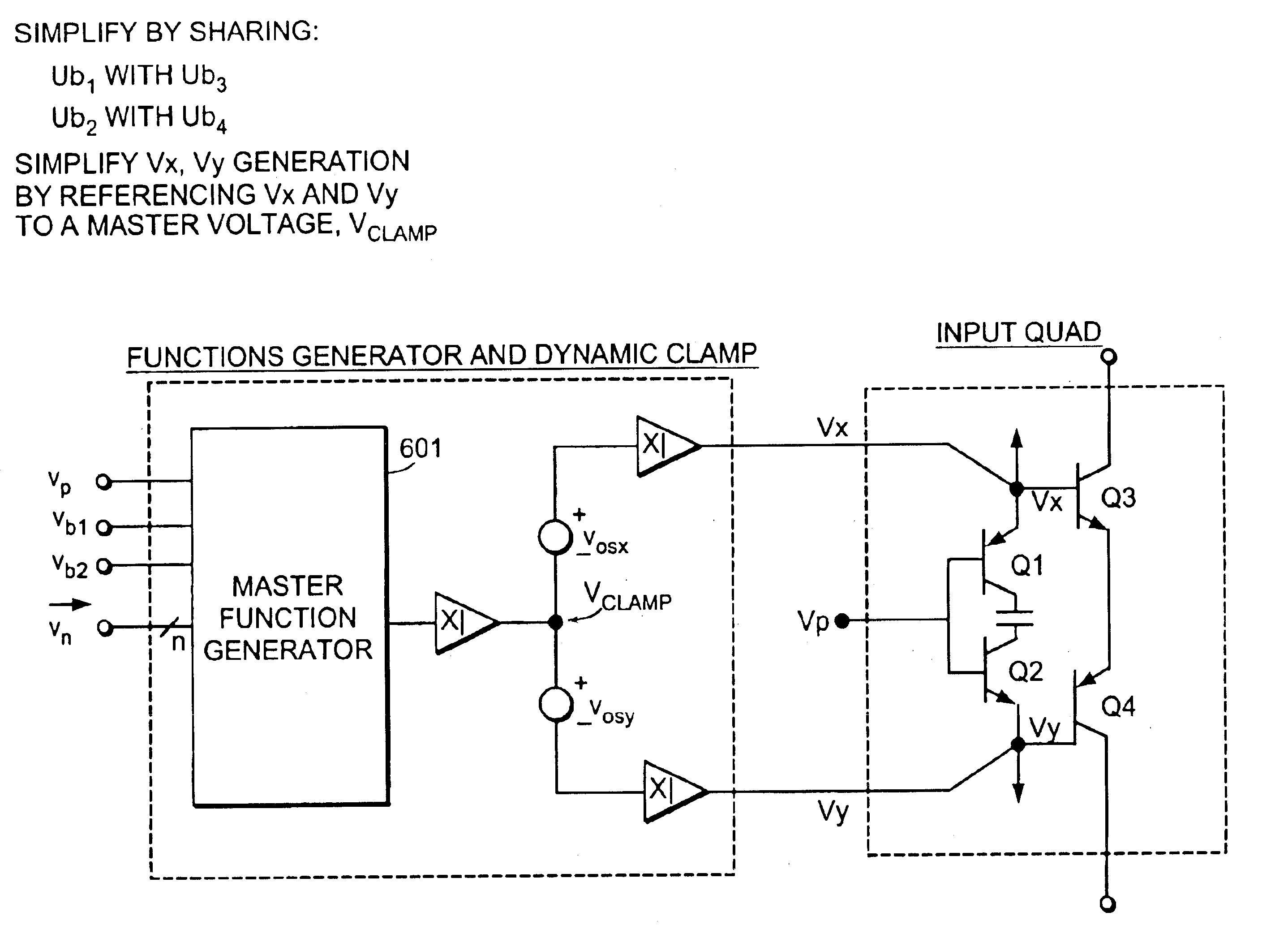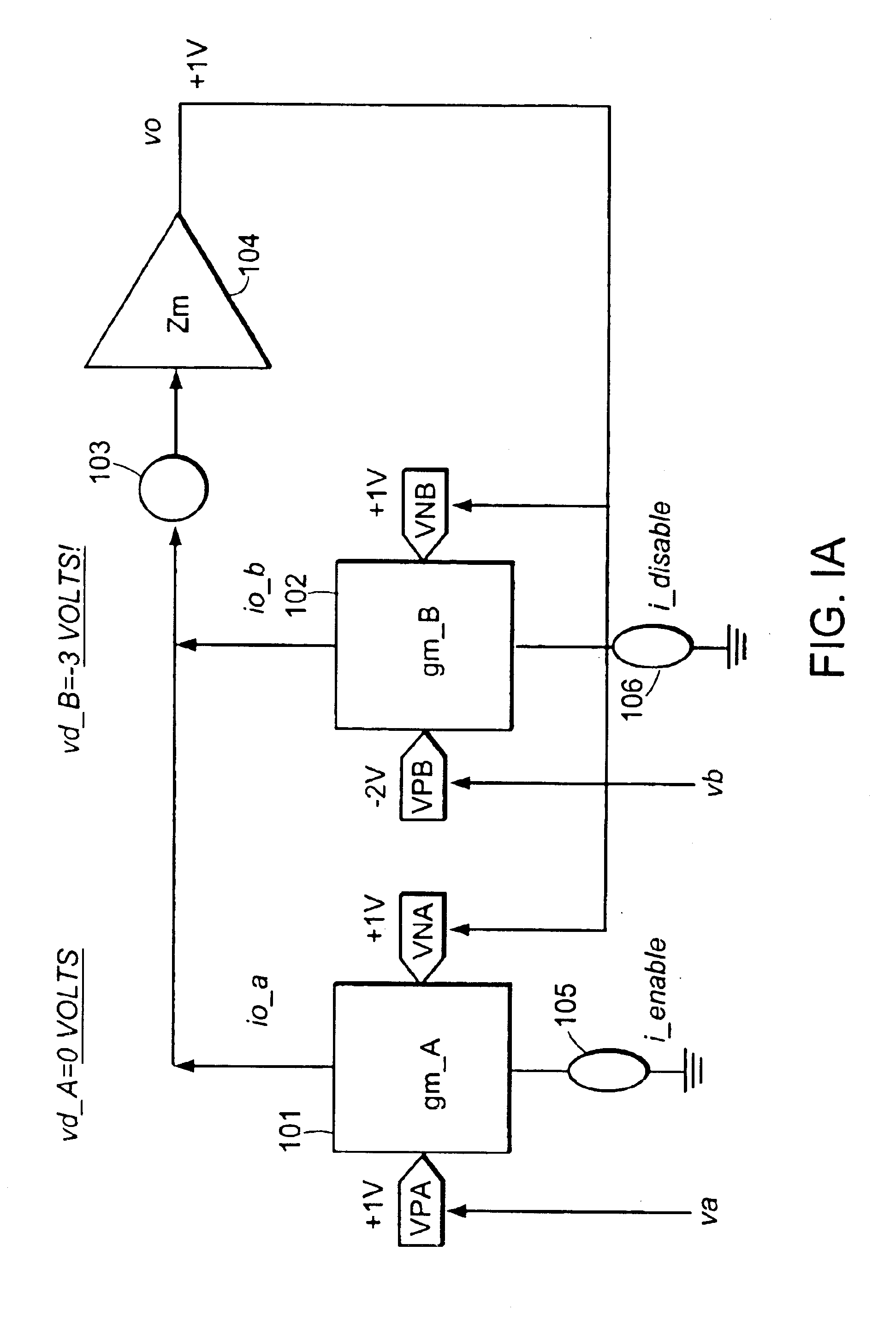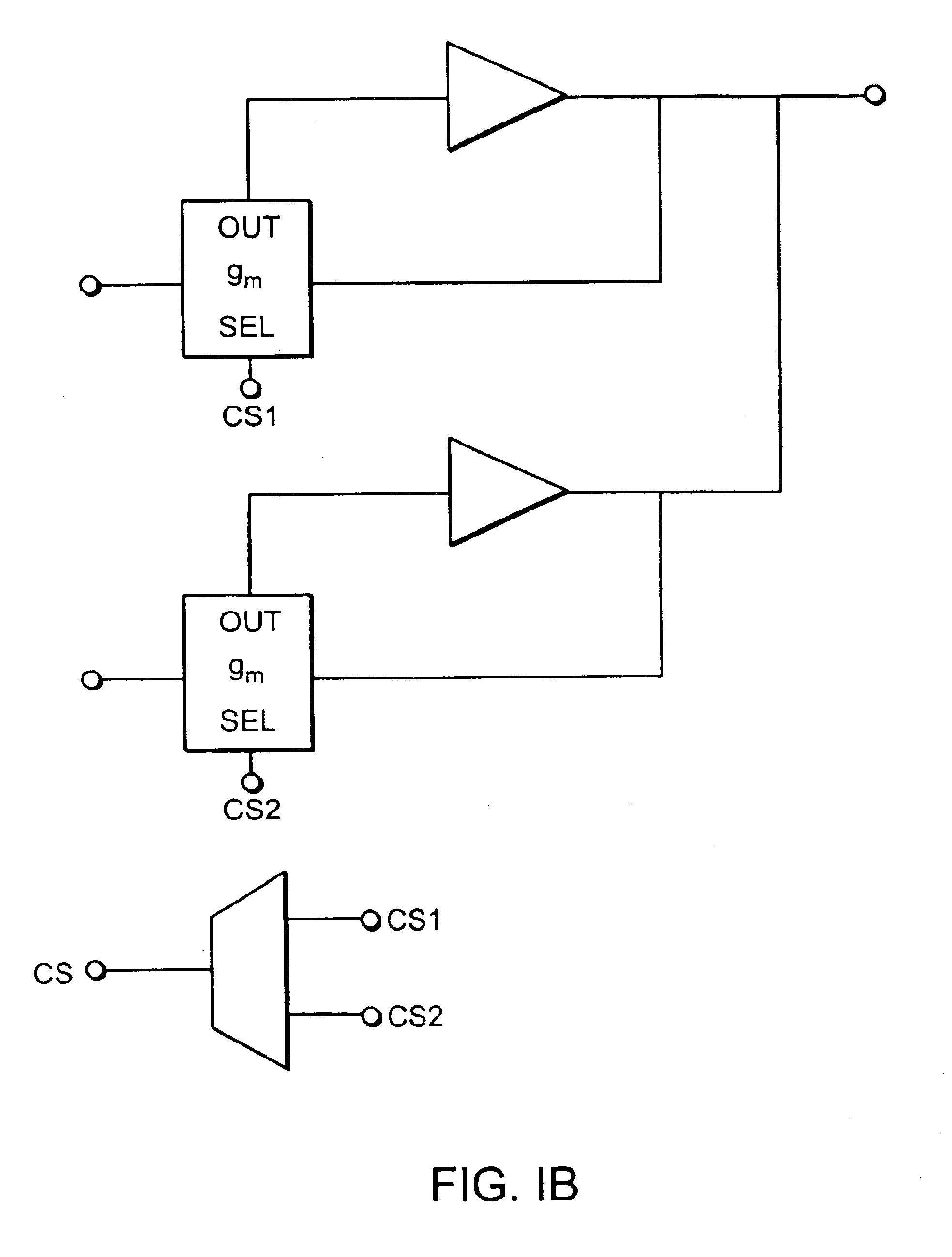Dynamic method for limiting the reverse base-emitter voltage
a reverse base-emitter and voltage limit technology, applied in pulse manipulation, gated amplifiers, pulse techniques, etc., can solve the problems of -degradation and increased noise, increase in noise,
- Summary
- Abstract
- Description
- Claims
- Application Information
AI Technical Summary
Benefits of technology
Problems solved by technology
Method used
Image
Examples
Embodiment Construction
The present invention will be better understood upon reading the following detailed description of various embodiments of aspects thereof, taken in connection with the figures. The particular aspects and embodiments of the invention described relate to the two-input, transconductance multiplexer of FIG. 1A described in the background hereof. However, the invention is not limited to that application, as will be understood by those skilled in this art. Any transistor, for example those of the circuit of FIG. 1B and others, for which μ-degradation may be a problem, used in a circuit for which the methods and circuits described are suitable can be protected by application of appropriate aspects of the invention. The circuits illustrated in FIGS. 1A and 1B are non-limiting examples, only. The number of parallel input blocks (e.g., FIG. 1A, input amplifiers 101 and 102) and the number of gain stages within each input block can be varied, including the use of two or more input blocks and t...
PUM
 Login to View More
Login to View More Abstract
Description
Claims
Application Information
 Login to View More
Login to View More - R&D
- Intellectual Property
- Life Sciences
- Materials
- Tech Scout
- Unparalleled Data Quality
- Higher Quality Content
- 60% Fewer Hallucinations
Browse by: Latest US Patents, China's latest patents, Technical Efficacy Thesaurus, Application Domain, Technology Topic, Popular Technical Reports.
© 2025 PatSnap. All rights reserved.Legal|Privacy policy|Modern Slavery Act Transparency Statement|Sitemap|About US| Contact US: help@patsnap.com



